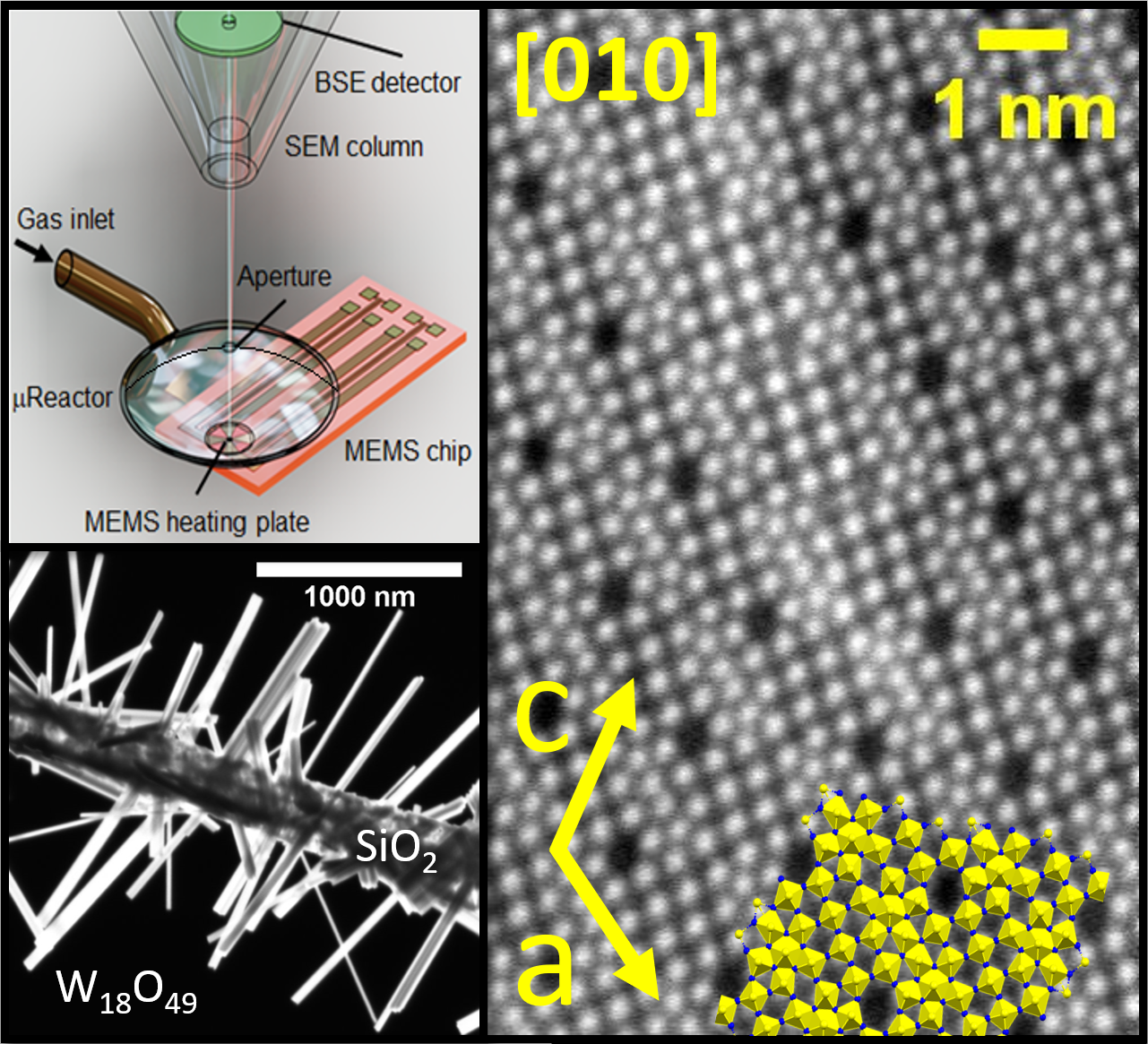W18O49 nanowhiskers decorating SiO2 nanofibers: Lessons from in-situ SEM/TEM growth to large scale synthesis
- Abstract number
- 42
- Presentation Form
- Poster & Flash Talk
- DOI
- 10.22443/rms.mmc2023.42
- Corresponding Email
- [email protected]
- Session
- Poster Session Two
- Authors
- Vojtech Kundrat (4, 3, 2), Kristyna Bukvisova (3, 5), Libor Novak (3), Lukas Prucha (1), Reshef Tenne (4), Jiri Pinkas (2)
- Affiliations
-
1. Institute of Scientific Instruments, Czech Academy of Sciences
2. Masaryk University
3. Thermo Fisher Scientific
4. Weizmann Institute of Science
5. CEITEC BUT
- Keywords
electrospinning, tungsten oxide, nanowhiskers, nanofibers, growth, W18O49, WO2.72, in-situ SEM, μReactor
- Abstract text
Tungsten suboxide W18O49 nanowhiskers is a material of great interest due to its potential high-end applications in electronics, near-infrared light shielding, catalysis, and gas sensing.[1] Moreover, it is exploited as a precursor for synthesizing tungsten dichalcogenide nanotubes.[2] In the present study, three main approaches for the fundamental understanding of W18O49 nanowhisker growth are introduced. Firstly, W18O49 nanowhiskers were grown from γ‑WO3/a‑SiO2 nanofibers in-situ in a scanning electron microscope (SEM) utilizing a specially designed micro-reactor (μReactor). It was found that irradiation by the electron beam (e-beam) slows the growth kinetics of the W18O49 nanowhisker markedly. Following this, an in-situ TEM study led to some new fundamental understanding of the growth mode of the crystal shear planes in the W18O49 nanowhisker and the formation of domain (bundle) structure. High-resolution scanning transmission electron microscopy (HRSTEM) analysis of a cross-sectioned W18O49 nanowhisker revealed the well-documented pentagonal Magneli’s columns and hexagonal channels characteristics for this phase. Furthermore, a highly crystalline and oriented domain structure and previously unreported structural motif responsible for the lattice distortions resulting in W18O49 nanowhiskers bundle formation, were analyzed. Finally, the knowledge gained from the in-situ SEM and TEM experiments was valorized in developing a multigram synthesis of W18O49/a-SiO2 urchin-like nanofibers in a flow reactor.
- References
[1] L. Zhang, H. Wang, J. Liu, Q. Zhang, H. Yan, J. Mater. Sci.: Mater. Electron. 2020, 31, 861.
[2] A. Margolin, R. Rosentsveig, A. Albu-Yaron, R. Popovitz-Biro, R. Tenne, J. Mater. Chem. 2004, 14, 617.


